How to support a Monstera plant as it grows, according to horticulture experts
Is your Monstera slowly taking over your home? Don't panic the experts are here to help you tame it
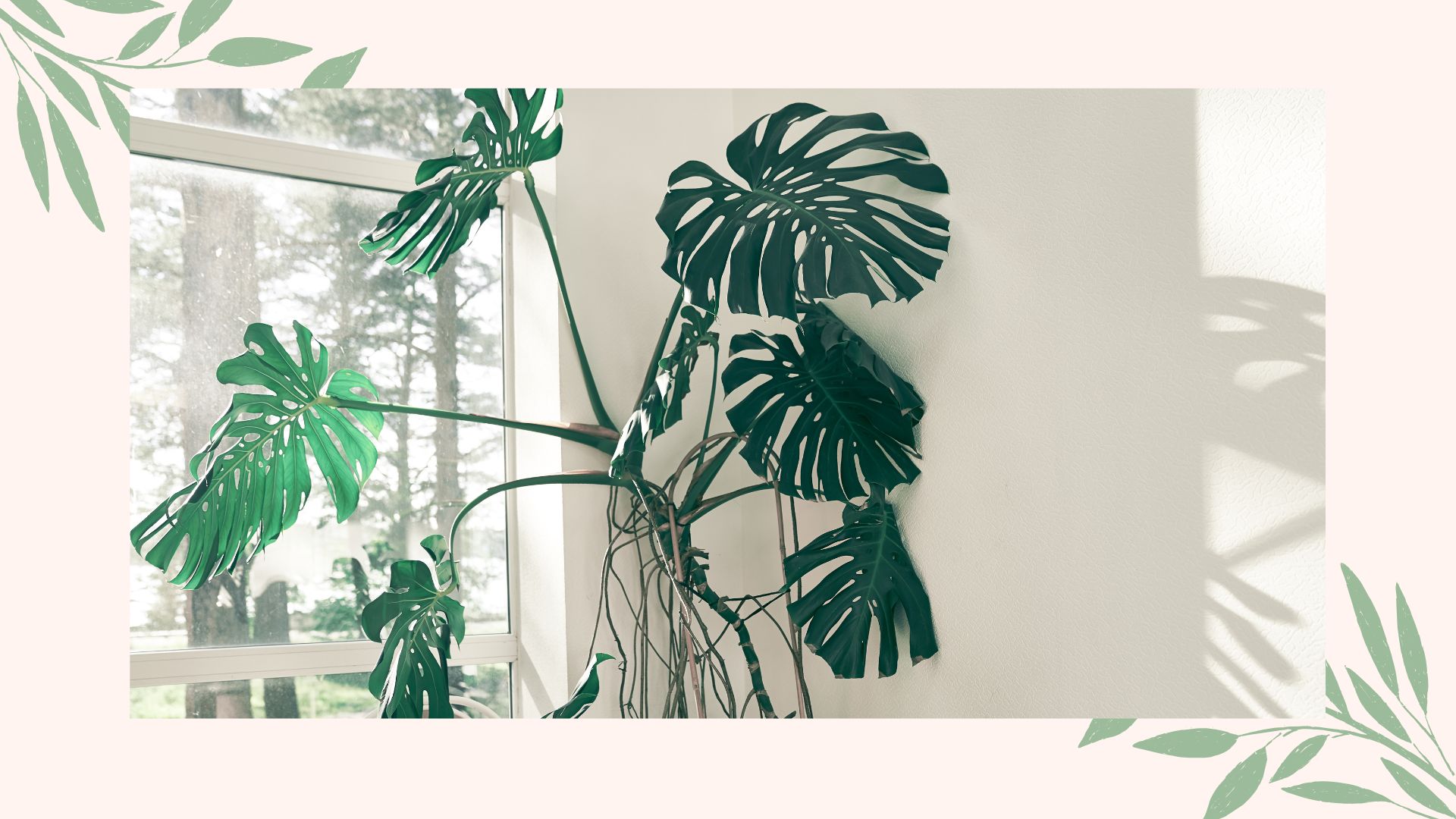

It doesn't take long for a Monstera plant to outgrow the space you originally placed it in – they can take over a whole room if left unaided. So how can you support this monstrous plant and keep it in check? We have consulted the experts for the best advice.
When caring for your monstera plant efficiently you'll see multiple aerial roots and leaves quickly beginning to shoot out of its original stem. Monsteras are one of the fastest-growing houseplants; you'll certainly not doubt that after owning one.
So how does one support a Monstera plant that grows large wide leaves and even longer thicker stems? That's the question we asked the experts, who have all the right advice to keep this lush houseplant in check.
How to support a Monstera plant as it grows: expert advice
As one of the easiest houseplants to look after, it's no real surprise that Monstera plants grow quickly and successfully with minimal intervention. However, just because your plant is thriving doesn't mean it doesn't need your care and attention.
"Monstera plants will become floppy as they grow, so you will need to tie the stems to some form of support, such as a coir cane or moss pole," says Graham Smith MCIHort, horticulture expert from LBS Horticulture.
He adds, "As Monsteras are vining plants, they must be supported as they climb upwards. You can use a moss pole to support a monstera as it grows, as the aerial roots will be able to hold onto this."
Graham explains that moss poles are usually made up of sphagnum moss, this is so the roots can easily latch onto the surface of the moss and wrap around it. However, he does point out that if you opt for a moss pole you'll need to ensure it's kept moist enough for the roots to attach themselves.
Sign up to our free daily email for the latest royal and entertainment news, interesting opinion, expert advice on styling and beauty trends, and no-nonsense guides to the health and wellness questions you want answered.

Graham has extensive knowledge in the horticultural and gardening industries, and prides himself on using this to help gardeners of all skills create their perfect outdoor space.
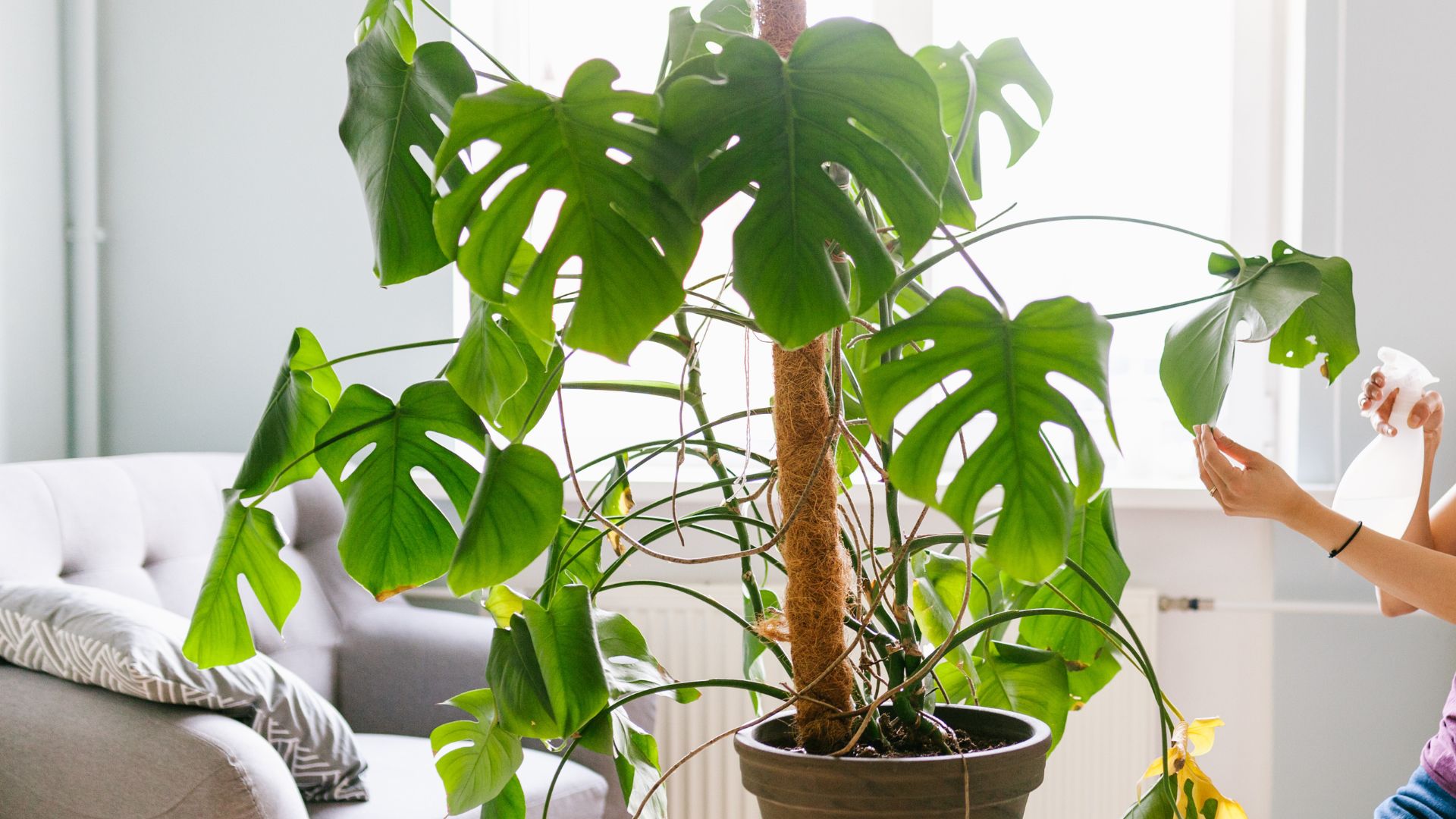
If you find yourself struggling to know how to care for your indoor plants as it is you might not want to add on the burden of caring for moss too.
"Alternatively, you can use a coco coir pole to support growing Monstera plants. These are made from the outer husk of coconuts, and the material is absorbent so it can help to keep your plant moist," explains Graham.
You simply push the husk pole into your Monstera plant's potting mix until it's in place and then loosely tie the stems of the plant to the pole using gardening twine.

RRP: £14.99 | No matter what height your plant has reached there will be a husk pole to suit it, RHS alone offers four different sizes. They are made from natural coco fibre, which is wrapped around a sturdy plastic core. It also has a Chinese fir wood spike to help to insert it.
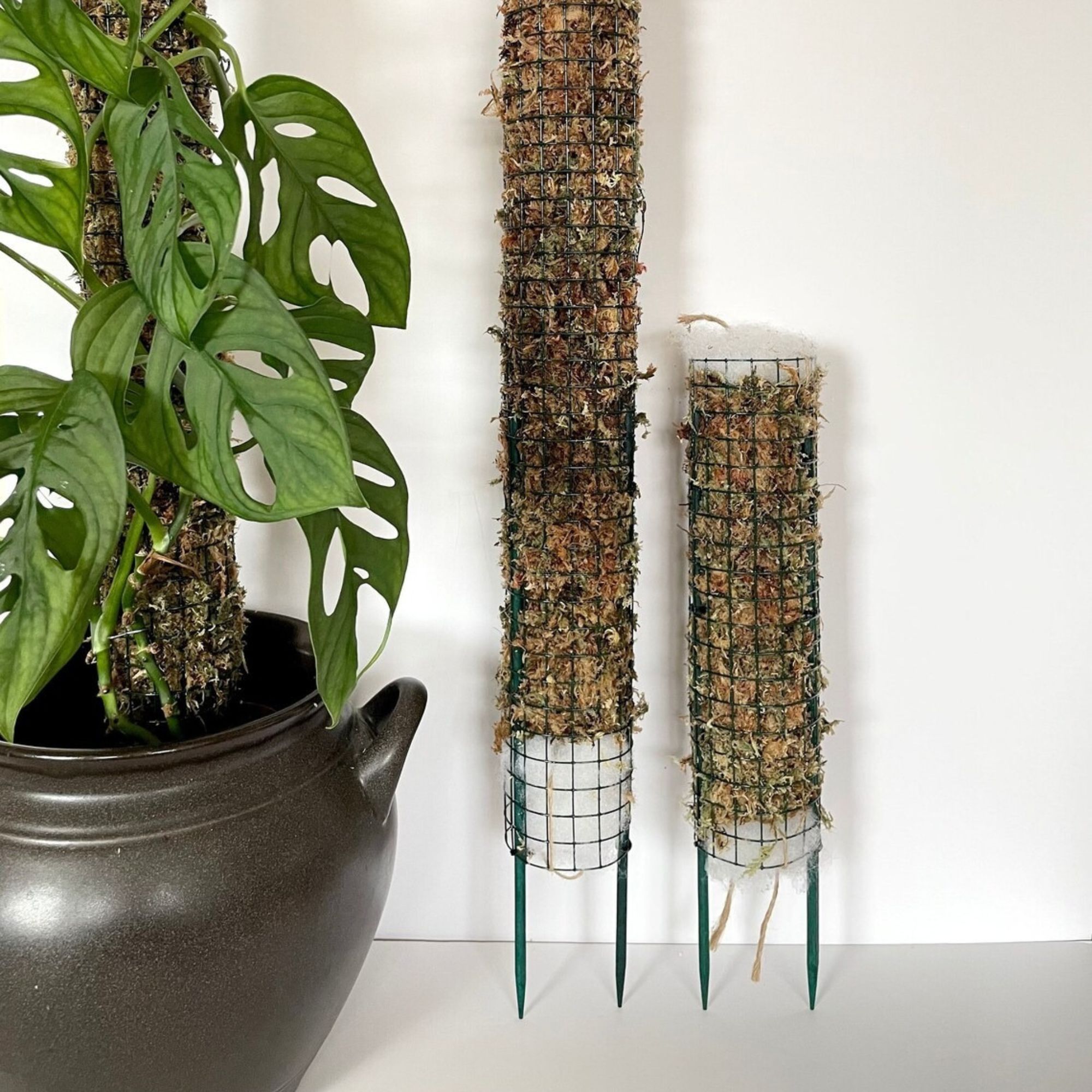
RRP: £16.99 | These handmade poles are designed to stack on top of one another making their height customisable to your plant's needs. The Etsy seller also provides a guide to ensure you order the right product for you and they come highly rated.
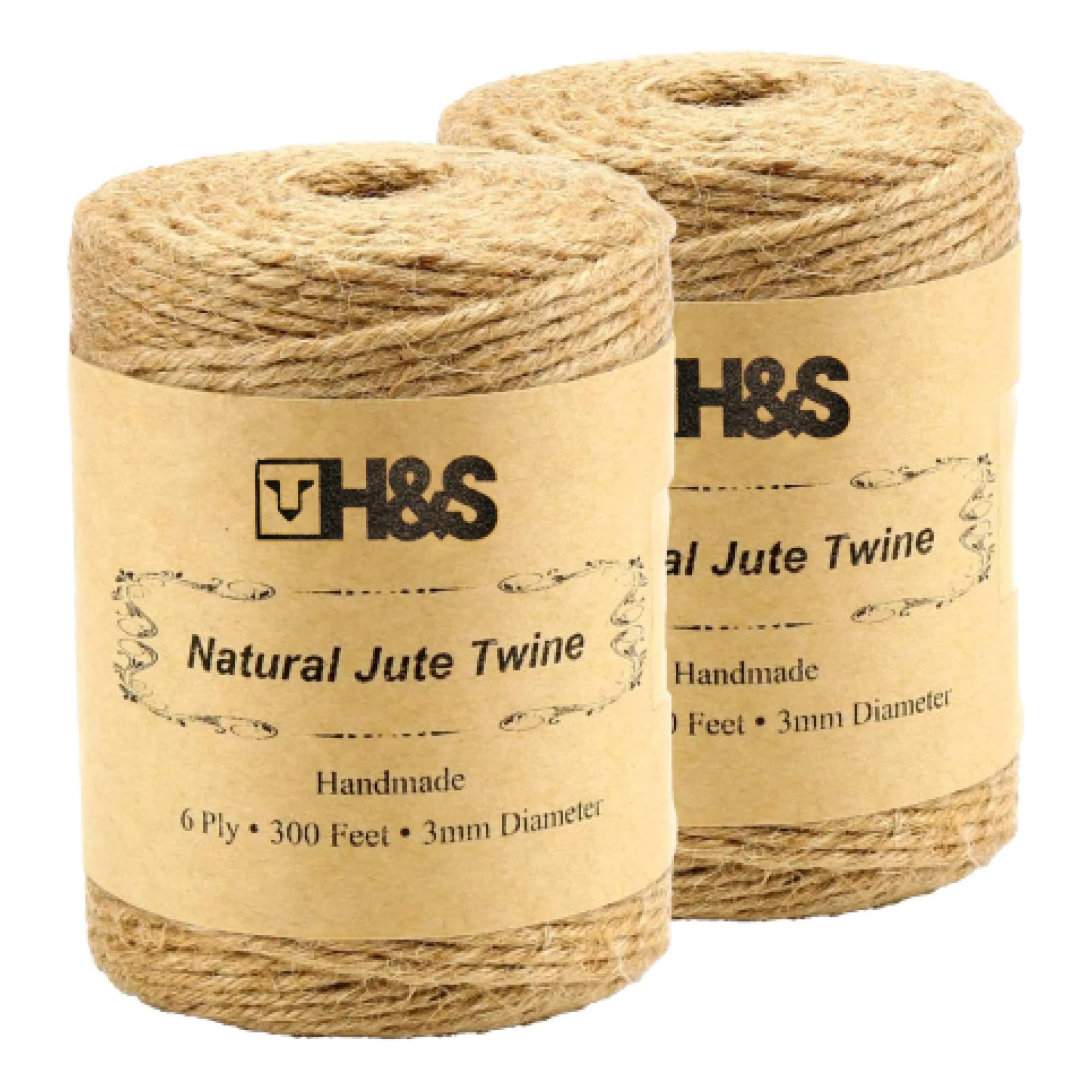
RRP: £8.89 | This natural jute twine is perfect for loosely tying your Monstera plant's stems to either pole and is 3mm thick so it'll keep the plant in order no matter how vigorously it grows.
How do you stabilise a Monstera plant?
Although they're certainly not one of the hardest houseplants to keep alive, Monstera plants can become a little high maintenance when they grow too large. After all, they're tropical plants and grow up to 20 metres in their natural habitat. So knowing how to stabilise your plant to stay in an upright position is key.
"Identify the areas around the bottom of the Monstera plant that need the most support," Graham advises. "These are usually the thicker, heavier stems. Use a trowel to dig small holes for the supports, and ensure that the support is inserted far down enough into the soil so that it does not move around. If needed, you can push the support all the way down to the bottom of the pot."
After that, he recommends using twine or strips of fabric to tie the stems loosely to the support so they're secure. Graham warns against tying the stems too tightly, as this can damage them.
He adds, "Start by adding the ties roughly an inch or two above where the base of the plant meets the soil. The more support the plant has towards the base, the better it will be able to support itself as it grows upwards. Repeat and add ties every few inches or so to the stem of the monstera."
FAQs
How do you make your Monstera plant grow upright?
In your search for the best houseplant for your bedroom, you may have bitten off more than you could chew with a Monstera plant. And as you read this you may be losing more floor space by the second thanks to the way the plant tends to grow any way it wants. So if you want to enjoy the beauty of plant but continue owning your home, you'll need to keep it straight from the start.
Rachel Cole, Seed Manager at Mr Fothergills explains, "If the plant is reasonably small, the moss pole is all you require and does not require any ties, if a larger plant and has not had a moss pole, once you have put the moss pole in the centre of the pot, without breaking the stems, so incredibly carefully, tie a few of the stems loosely with thick garden string. Hopefully, this will have all the leaves off the floor and the plant will find its own way to climb."
She says that because of the roughness of the moss pole, your plant will want to climb it as it grows, however, you'll need to buy a moss pole early on in the plant's life to ensure it grows straight.
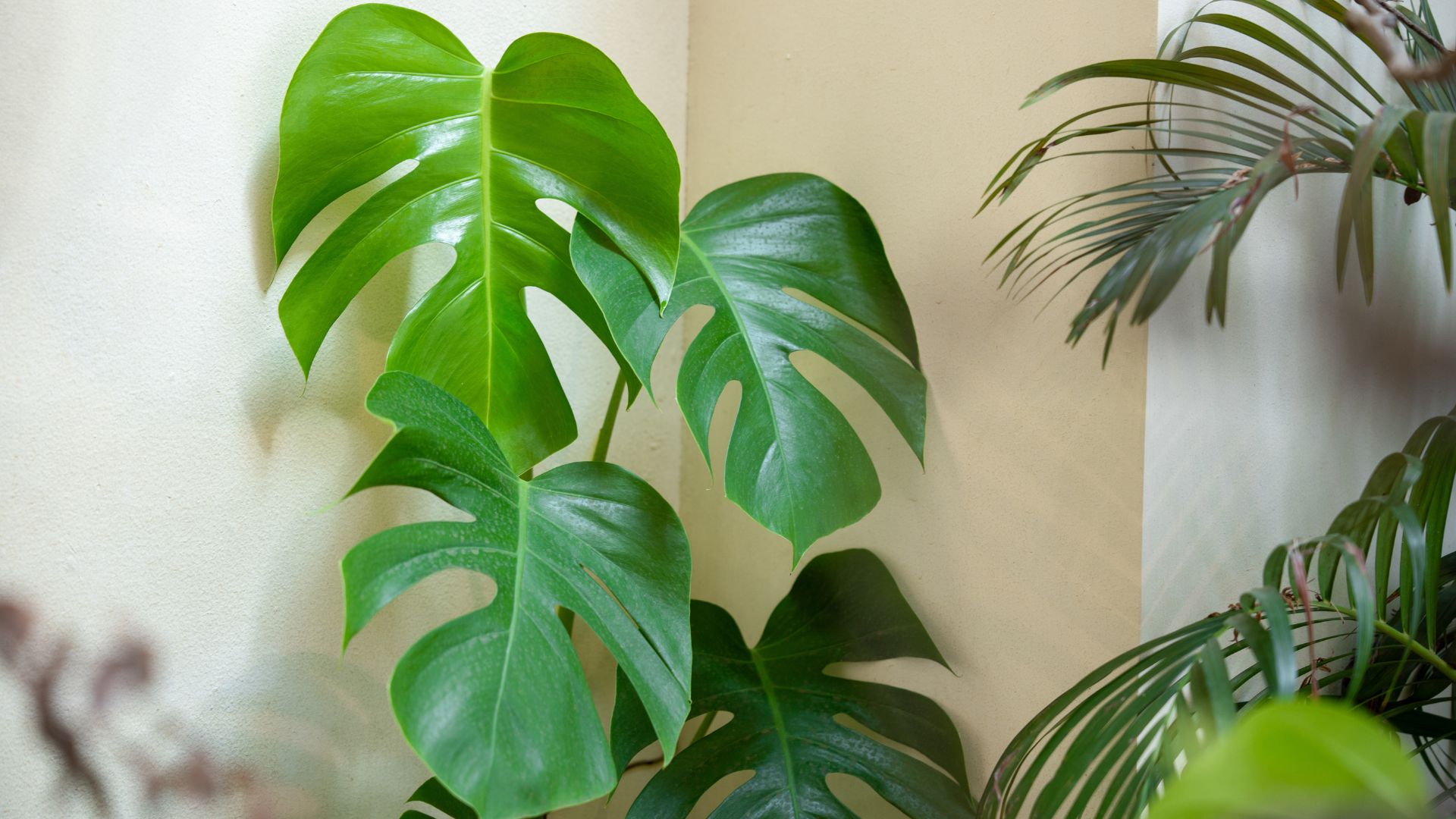
Do Monstera plants need to be supported? And from when?
Although somewhat low maintenance all the best indoor plants for your health and wellbeing will need some level of care from the second you buy them. So while Monstera plants are more than happy to grow rapidly on their terms you should get in there early and guide them with support.
"You'll need to support them as early as possible, as they grow fast. Start with a small moss pole and then pot on to a bigger pot and longer moss pole. Remember to water/mist the plant and place it in a room with good sunlight, and then it will perform well," explains Rachel.
Graham also echoes this. He says that if you wait too long, your plant can grow too heavy to the point where a single support won't do much good.
Houseplants can aid us in many ways, some plants help with condensation and even species that NASA recommends for keeping our homes air clear. It's just a matter of knowing how to care properly for them so they can do their jobs for us.

Emily joined woman&home as a staff writer after finishing her MA in Magazine Journalism from City University in 2023. After writing various health and news content, she now specialises in lifestyle, covering unique cleaning hacks, gardening how-tos, and everything to help your houseplants thrive.